
Test: Volvo XC60 T8 Twin Engine AWD R Design
Content
The drivetrain, as seen on the label, shares the smaller and lighter XC60 T8 Twin Engine with its bigger brother. The gasoline section consists of a four-cylinder engine supported by a mechanical and turbine charger, producing 235 kilowatts, or about 320 "horsepower". The compressor gives it torque at its lowest rpm, the turbo keeps it in the midrange, and it's easy to see that it shows no resistance to spinning at high rpm. This is an engine that could easily live without electrical support, but it is true that it would be greedy enough for its performance. But since it is supported by electricity, it does not have these problems.
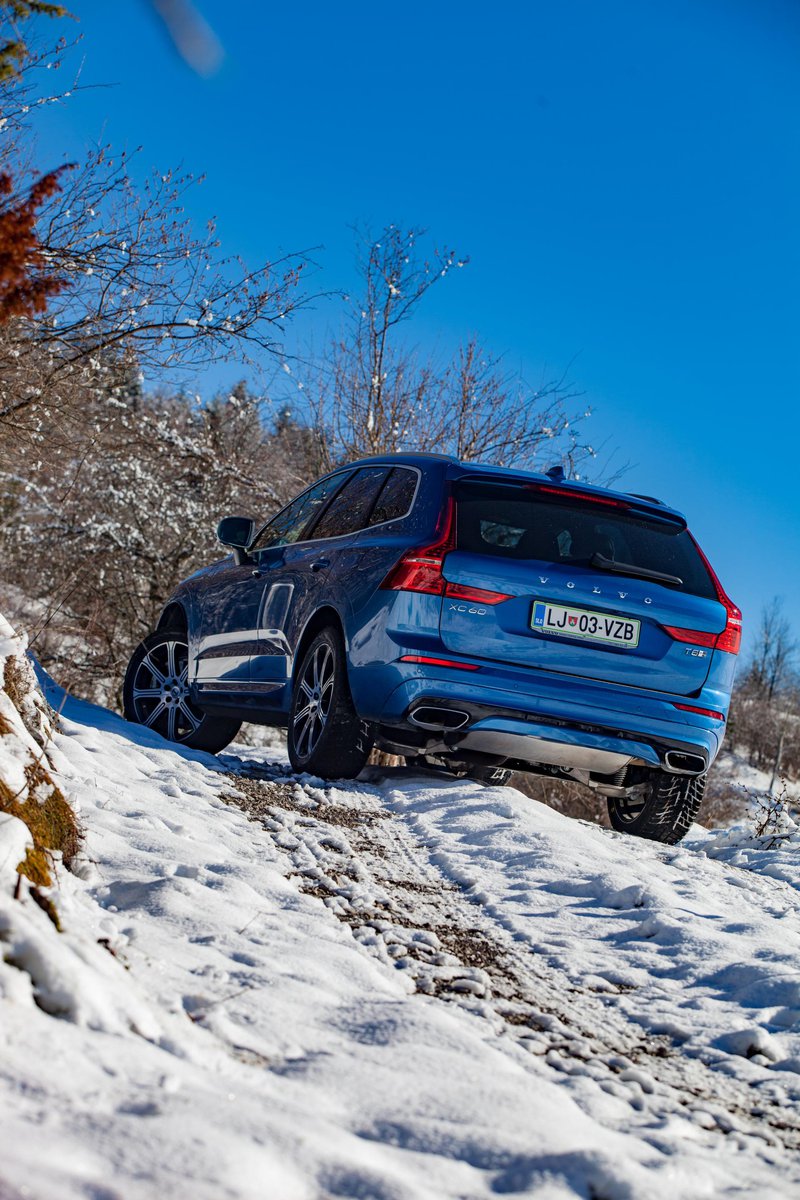
The electrical part consists of a lithium-ion battery installed in the rear and a 65 kilowatt electric motor. The total system power is 300 kilowatts (which means just over 400 "horsepower"), so the XC60 is also the most powerful XC60 on offer. In fact, it's a shame that the XC60 plug-in hybrid is also the most expensive XC60, and hopefully Volvo will fit an even less powerful and therefore cheaper plug-in hybrid drivetrain. Possibly the look the new XC40 will get, that is, the T5 Twin Engine powertrain, which is a combination of a 1,5-liter three-cylinder engine and a 55-kilowatt electric motor (with the same battery and seven-speed gearbox). ... It should match the more powerful diesel version in terms of power and price, and may be the best choice for the XC60 today.
But back to the T8: such a powerful but turbocharged petrol engine and over two tons of weight certainly sounds like a recipe for huge fuel consumption, but since it's a plug-in hybrid, it's the XC60 T8. On our standard 100km lap, average gas mileage was only six liters, and of course we also drained the battery, which means another 9,2 kilowatt-hours of electricity. The consumption on the standard circuit is higher than the XC90 with the same drive, but it should be noted at the same time that the XC90 had summer and winter XC60 tires, and the big brother had pleasant summer temperatures, while the XC60 was colder. below zero, which means that the gasoline engine also worked several times due to interior heating.
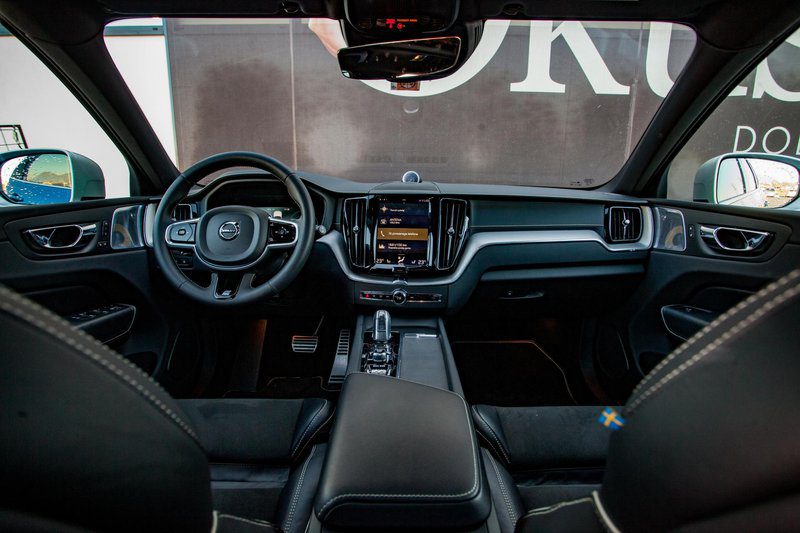
As is often the case with plug-in hybrids, the test fuel consumption was even lower than the conventional circuit, of course, because we regularly refueled the XC60 and drove a lot on electricity alone. Not after 40 kilometers, as the technical data says, but there from 20 to 30 (depending on the pain of the right leg and the ambient temperature), especially if the driver moves the gear lever to position B, which means more regeneration and less need to use the brake pedal ... Of course, the XC60 cannot be compared to electric vehicles like the BMW i3 or Opel Ampero, which allow you to drive with little or no brake pedal, but the difference in the D gear lever position is still clear and welcome.
Acceleration is decisive, system performance is excellent. The driver can choose between several driving modes: Hybrid is designed for everyday use, while the system itself chooses between the drive and provides the best performance and fuel consumption; Pure, as the name suggests, offers an almost all-electric driving mode (which doesn't mean the petrol engine won't start from time to time as the XC60 T8 doesn't have the option to switch to all-electric mode), Power Mode delivers all the power available from both engines ; AWD provides permanent four-wheel drive, and Off Road operates at speeds up to 40 kilometers per hour, the chassis is raised by 40 millimeters, electronics provide better traction, HDC is also activated - downhill speed control).

If the battery is low, it can be recharged by activating the charging function (not on the drive mode select button, but with the excellent infotainment system), as this instructs the petrol engine to charge the batteries as well. Instead of the Charge function, we can use the Hold function, which similarly maintains only the battery charge (for example, when driving through the city to the charging station at the end of the route). Both signal their work with a small but clear signal next to the electricity meter in the battery: in charge mode there is a small lightning bolt, and in hold mode there is a small blockage.
The main problem of hybrid cars - the weight of the batteries - has been elegantly solved by Volvo - they have been installed in the middle tunnel between the seats (the one in which the classic all-wheel drive gimbals will be used to transfer power to the rear). axis). The size of the trunk does not suffer due to batteries. However, thanks to electronics and an electric motor, it is slightly smaller than the classic XC60, and with more than 460 liters of volume, it still provides everyday and family use.

The XC60 T8 has a built-in (only) 3,6-kilowatt charger, which means charging is quite slow, taking just under three hours to charge a full battery. It's a pity that Volvo engineers didn't resort to an even more powerful charger, as this XC60 is better suited to public charging stations. We also blame Volvo for the fact that the plug-in hybrid, which costs at least 70k, does not add a type 2 cable for use at public charging stations in addition to the classic home charging cable (with plug). . Also, installing the charging port behind the front left wheel is not the best option, as it happens too quickly, so care must be taken to ensure that the connecting cable is long enough.
Batteries or electric drive are not only responsible for the excellent performance and low consumption of the XC60 T8, but also for its weight, as it weighs more than two tons when empty. This can be seen on the road too - on the one hand, it makes the ride more comfortable, and in corners it quickly shows that the T8 is not very maneuverable. Body vibrations are still very small, roll in corners is even less, but shock absorption from under the wheel remains at an acceptable level.
Much of the credit for this goes to the optional Four-C air landing gear - two and a half thousand, how much you have to dig in your pocket - a great investment!
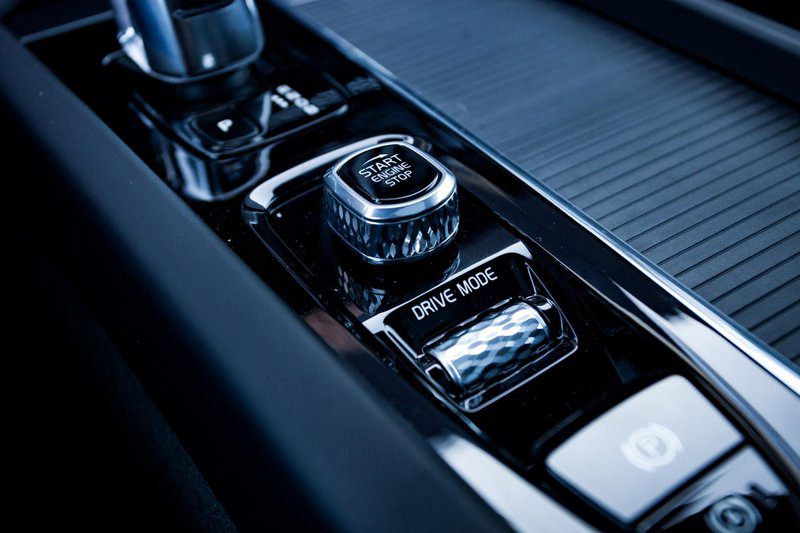
The electric four-wheel drive is barely noticeable, but good enough that you don't get stuck blindly with this Volvo. If the ground is really slippery, you can even sweep the rear, but you will need to switch it to all-wheel drive first and switch the stabilization electronics to sport mode. An even better solution for a little entertainment: switch to Pure mode when the XC60 T8 is powered mostly electrically, i.e. from the rear.
At the same time, modern assistance systems provide safety at all times: traffic sign recognition, lane departure assistance (which does not allow the car to sit well in the middle of the lane, but does not respond until the car pulls up to the curb.) Also there are active LED headlights, Blind Spot Assist, Active Parking Assist, Active Cruise Control (of course with automatic stop and start)… The latter, combined with Lane Keeping Assist, is integrated into the Pilot Assist system, which means this Volvo can be driven semi-autonomously , because it easily follows the road and the movement in the convoy without any effort from the driver - you only need to grab the steering wheel every 10 seconds. The system is a little confused by the lines on city streets, as it likes to stick to the left lane and therefore rushes into the left lanes unnecessarily. But it's really meant to be used in traffic on the open road, and it works great there.

That Volvo's designers really put in the effort is already proven by the look, which is easily recognizable and far enough away from the shape of the larger XC90 (that they can be distinguished from each other) and at the same time recognizable Volvo cars, especially the interior. Not only in design and materials, but also in content. Fully digital meters provide accurate and easy to read information. The center console stands out, almost completely devoid of physical buttons (the audio system volume button deserves praise) and with a large vertical screen. You don't even have to touch the screen to scroll through menus (left, right, up, and down), which means you can help yourself with anything, even with warm, gloved fingers. At the same time, the vertical layout also proved to be a good idea in practice - it can display larger menus (several lines), a larger navigation map, some virtual buttons are also larger and easier to press without looking away. from the road. Almost all systems in the car can be controlled using the display. The system, one can easily say, is ideal and is an example for other manufacturers, complemented by an excellent audio system.
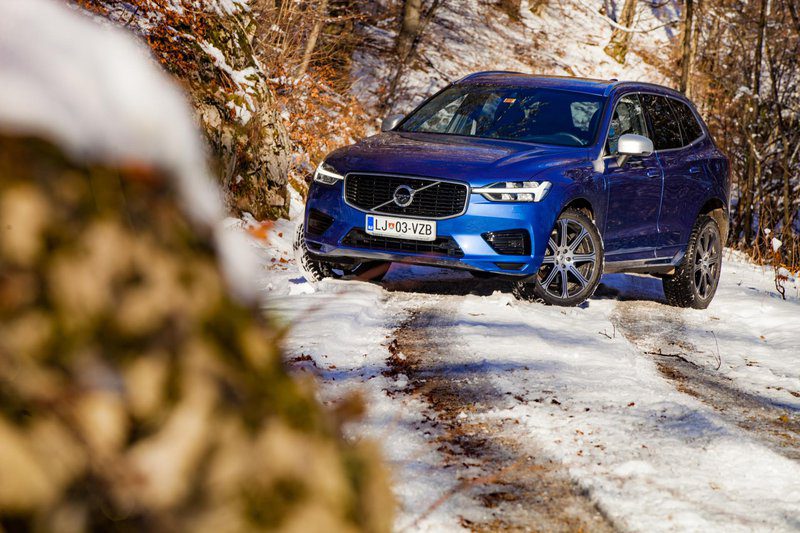
It sits great both front and rear (where there's more room than most competitors, see our premium SUV benchmark on page 58). When we add in great materials, an audio system and superb smartphone connectivity, it's clear that Volvo's designers have done a great job - which is to be expected given that the XC60 may only be a scaled-down version of the XC90.
For the cheapest XC60 T8, you will need to subtract a good 68k (with Momentum hardware), but Inscription (for 72k) or R Line (70k, for those looking for a sportier look and sportier chassis setup) at the expense of the kit. due to the higher price, the better choice. By no means with the XC60, if you are looking for this type of vehicle, you will not miss it.
Read more:
Comparison test: Alfa Romeo Stelvio, Audi Q5, BMW X3, Mercedes-Benz GLC, Porsche Macan, Volvo XC60
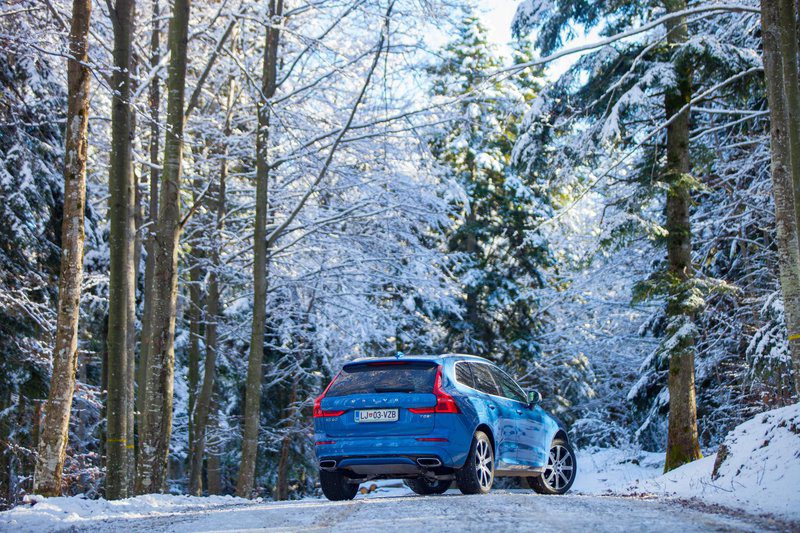
Volvo XC60 T8 Twin Engine AWD R Design
Basic data
| Sales: | VCAG doo |
|---|---|
| Test model cost: | 93.813 € |
| Base model price with discounts: | 70.643 € |
| Test model price discount: | 93.813 € |
| Power: | 295kW (400 KM) |
| Acceleration (0-100 km / h): | 6,1 with |
| Maximum speed: | 230 km / h |
| Guarantee: | General warranty two years without mileage limitation |
| Systematic review | 30.000 km / 12 |
Cost (up to 100.000 km or five years)
| Regular services, works, materials: | 2.668 € |
|---|---|
| Fuel: | 7.734 € |
| Tires (1) | 2.260 € |
| Loss of value (within 5 years): | 35.015 € |
| Compulsory insurance: | 5.495 € |
| CASCO INSURANCE (+ B, K), AO, AO + | 10.750 ( |
| Calculate the cost of auto insurance | |
| Buy up | € 63.992 0,64 (km cost: XNUMX €) |
Technical information
| engine: | 4-cylinder - 4-stroke - in-line - petrol - transversely mounted at the front - bore and stroke 82 × 93,2 mm - displacement 1.969 cm3 - compression ratio 10,3:1 - maximum power 235 kW (320 hp) ) at 5.700 rpm - average piston speed at maximum power 17,7 m / s - specific power 119,3 kW / l (162,3 hp / l) - maximum torque 400 Nm at 3.600 rpm – 2 camshafts in the head (toothed belt) – 4 valves per cylinder – direct fuel injection – intake air aftercooler Electric motor 1: maximum power 65 kW, maximum torque 240 Nm System: maximum power 295 kW, maximum torque 640 Nm |
|---|---|
| Battery: | Li-ion, 10,4 kWh |
| Energy transfer: | the engine drives the front wheels - planetary gear - gear ratio I. 5,250; II. 3,029 hours; III. 1,950 hours; IV. 1,457 hours; v. 1,221; VI. 1,000; VII. 0,809; VIII. 0,673 - differential 3,329 - rims 8,5 x 20 J x 20 - tires 255/45 R 20 V, rolling circumference 2,22 m |
| Capacity: | top speed 230 km/h - acceleration 0-100 km/h 5,3 s - top speed electric np - average combined fuel consumption (ECE) 2,1 l/100 km, CO2 emissions 49 g/km - driving range electric (ECE) np, battery charging time 3,0 h (16 A), 4,0 h (10 A), 7,0 h (6 A) |
| Transportation and suspension: | crossover - 5 doors, 5 seats - self-supporting body - front single suspension, coil springs, three-spoke cross rails, stabilizer - rear multi-link axle, coil springs, stabilizer - front disc brakes (forced cooling), rear discs, ABS, electric rear brake wheels (Seat Switch) - Rack and Pinion Steering Wheel, Electric Power Steering, 3,0 Turns Between Ends |
| Mass: | empty vehicle 1.766 kg - permissible total weight 2.400 kg - permissible trailer weight with brake: 2.100 kg, without brake: 750 kg - permissible roof load: 100 kg |
| External dimensions: | length 4.688 mm - width 1.902 mm, with mirrors 2.117 mm - height 1.658 mm - wheelbase 2.865 mm - front track 1.653 mm - rear 1.657 mm - driving radius 11,4 m |
| Inner dimensions: | longitudinal front 860-1.120 600 mm, rear 860-1.500 mm - front width 1.510 mm, rear 910 mm - head height front 1.000-950 mm, rear 500 mm - front seat length 540-460 mm, rear seat 370 mm - steering wheel diameter 50 mm – fuel tank L XNUMX |
| Box: | 598 -1.395 l |
Our measurements
| T = 10 ° C / p = 1.028 mbar / rel. vl. = 56% / tires: Nokian WR SUV3 255/45 R 20 V / odometer status: 5.201 km | |
| Acceleration 0-100km: | 6,1s |
|---|---|
| 402m from the city: | 14,3 years ( 161 km / h) |
| Fuel consumption according to the standard scheme: | 6,0 l / 100km |
| Braking distance at 100 km / h: | 42,1m |
| AM table: | 40m |
| Noise at 90 km / h in 6rd gear | 61dB |
| Test errors: | Unmistakable |
Overall rating (476/600)
Volvo with the XC60 proves that even slightly smaller SUVs can be as prestigious as their biggest brothers, and that they are at the very top when it comes to modern technology (driving, assistance and infotainment).
Cab and trunk (91/110)
The XC60 is one of the most spacious in its class, and since the interior largely replicates the larger, more expensive XC90, it deserves high marks here.
Comfort (104
/ 115)Since the T8 is a plug-in hybrid, it is mostly very quiet. The infotainment system is perfect and there is no shortage of fully digital meters. And it still sits perfectly
Transmission (61
/ 80)It's a pity that the battery charges only 3,6 kilowatts of power - with a more powerful built-in charger, the XC60 T8 would be even more useful. And still:
Driving performance (74
/ 100)The XC60 is not an athlete, even if it is as powerful as the T8. It's mostly comfortable, and bumps in the corners can be a little confusing.
Security (96/115)
There are many help systems, but not all are available. Lane Keeping Assist could work better
Economy and environment (50
/ 80)Since the XC60 T8 is a plug-in hybrid, fuel costs can be extremely low as long as you drive mostly around town and charge regularly.
Driving pleasure: 4/5
Electric four-wheel drive can be fun, and the chassis is also well suited to rubble.
We praise and reproach
design
infotainment system
capacity
abundance of the most modern assistance systems
maximum charging power (3,6 kW total)
small fuel tank (50l)